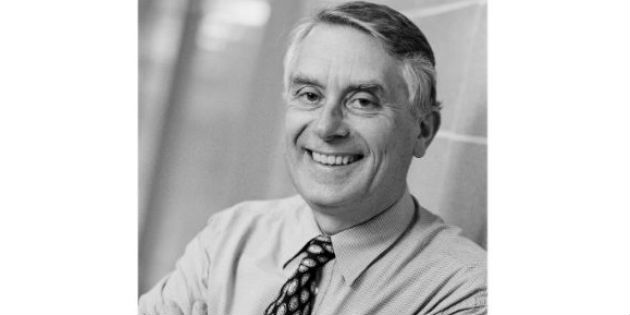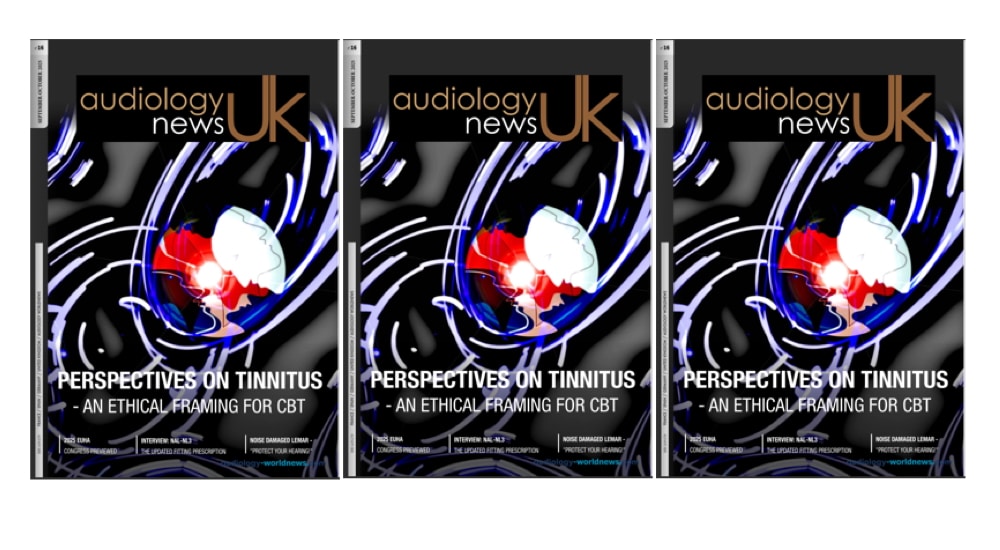Auditory Processing: No hearing loss - but hearing problems nonetheless
AUDIOLOGYNOW!
For some time now, it is clear how important the brain is for hearing. The result of research by professor emeritus Jos Eggermont from the Hotchkiss Brain Institute of the University of Calgary, Canada, further underlines this.

When test animals are exposed to the same noise at a non-traumatic level for a prolonged period of time, no hearing loss will occur. But in the brain things will have changed. And for humans changes like these as a consequence of similar conditions are likely to cause reduced understanding of speech. Eggermont, specialized in brain plasticity, explained the mechanism behind this during his lecture entitled ‘Long term non-traumatic noise exposure: a cause of CAPD?’ on Wednesday, April 13, during the Academic Research Conference linked to AudiologyNOW!
When presented with incubator noise,dramatic changes took place in thebrains of neonatal rats, resulting inretarded auditory cortical development.This was shown by F. Chang and M. Merzenich in 2003 inScience. Outcomes in neonatals were, however, at the timerated as irrelevant for the adult brain based on suppositionsof the adult brain’s plasticity. Eggermont: “Dogmas on brainplasticity in adults are that it takes behaviorally relevantevents to invoke changes or, alternatively, that it involvestraining and learning”, says Eggermont.
He spent the first decade of his research on the young brainbefore switching to research on the plasticity of the adultbrain. “This dogma means, translated to sound experimentswith test animals, that it is impossible to induce plasticityin the adult animal brain unless the sound is behaviorallyrelevant. In other words: experiments should for instance befood or safety related to get a response.”
Eggermont: “This fits to our experiments with adult cats,published in 2006. Exposure to sound in more or less thesame spectrum from 4 kHz to 20 kHz for three weeks at80 dB SPL (comparable to 76 dBA) – in the safe range forhearing loss – causes permanent damage to the peripheralauditory system, which results in the reorganization of thecortical tonotopic map. Later we moved to an even lowersound level of 68-70 dB SPL, a quite normal backgroundlevel for conversation in a crowded place. The resultsremained the same: the brain turned down the gain for the frequency range of the persistent sounds that were fed toit, in order to ignore it as much as possible.” (See box below.)
Silence heightens sensitivity
Research from Craig Formby PhD, published inthe Journal of the Acoustic Society of Americain 2003, showed that students rated soundssignificantly louder than before after wearingearplugs for 23 hours a day during two weeks.The other way around, after wearing an iPod(at moderate sound levels, ~60 dB) almostpermanently for two weeks, they rated thesounds much softer, with typically a 6 dBdifference.
It is interesting to notice what happened at the edges of thesound, says Eggermont: “Loss of lateral inhibition occurred,so the sound at the edge-frequencies was emphasized. Thisenhances the suppressing effect on the 4 to 20 kHz regioneven more. Normally, every neuron suppresses its neighbor.
“Hearing loss occurs in the ear, hearing problems are in the brain”
This so-called surround suppression mechanism not onlyoccurs in the auditory system, but also in the visual system.Neurons do not respond as much when the stimulus isintensified. When in the 4 to 20 kHz region this suppressiontakes place, the neighboring regions get the opportunity togo up. This effect can be induced in only three weeks. Butthe recovery takes three months at the least. It is not farfetchedto suppose that a longer exposure would causepermanent effects. And of course, one might suppose thatthese animal test outcomes go for animals as well as forhumans.”
Results in humans
Although it is of course impossible to perform tests likethese with humans, there are indications that resultsindeed do apply to humans. Eggermont: “A Finnish groupreported in 2004 on the effects of factory noise on speechunderstanding. They compared people from the same agegroup with office jobs to people working in the factory –the latter having used the required sound barrier. It turnedout that in both groups no clinical hearing loss could beestablished. But consonant-vowel phoneme discrimination(e.g., /ba/ vs. /pa/) was significantly less in the factoryworkers group. There was no difference in hearing, but inthe brain there was a difference in the mismatch negativity.This suggested problems with understanding of speechin the factory workers group, which had been exposed toprolonged non-traumatic noise. That is why I say: hearing loss occurs in the ear, but hearing problems are in the brain.”

Eggermont explains that it is because of results like thesethat state of the art audiology is moving away from justthe pure tone audiogram to establish hearing problemsand to use speech in noise discrimination tests in addition.“But outside this setting, for instance in standard annualhearing testing on the work-floor, the pure tone audiogramstill dominates. It could be said that an additional speechin-noise test takes too long, which isn’t very practical.Moreover, it will be impossible anyway to bring down noiselevels in factories down to a level that doesn’t affect thebrain. It is more practical to think of other solutions, suchas shifting tasks periodically to environments with differentsound characteristics. It probably also matters what soundexperiences there are after work.”
Tinnitus
In 2009-2013 Eggermont’s group published follow up papersusing even lower prolonged sound levels, this time also inrelation to tinnitus, an affliction that presently involves tento fifteen per cent of the general population. “The potential theoretical connection between prolonged non-traumaticnoise and tinnitus is as follows”, Eggermont starts explaining.“Tinnitus is the result of increased spontaneous firing ofneurons in the cortex, the brain stem and the mid-brain. Thismeans that when there is no sound there still is spontaneousneuron firing activity in the brain. This spontaneous activitycan be induced by lack of regular sound input, which forinstance is the case with high frequency hearing loss. Whenthe input is reduced, the brain turns up the gain. You then hearthe frequencies you are missing as tinnitus, just like phantompain.” (Read more on tinnitus and retraining therapy).
Without high frequency hearing loss, there still is aconnection between prolonged non-traumatic soundexposure and tinnitus. The result is quite the oppositeof the earlier experiments with permanent hearing loss.“The presented sound-evoked activity in auditory cortexis suppressed, and also the spontaneous firing rate goesdown. This results from the reduction in gain. This situationis sustained until long (> 3 months) after the experiment isstopped. In the same way, as we have seen, the increaseddriven and spontaneous firing rate at the edges where thegain was up is also sustained. So at these edges we notice atinnitus response (increased spontaneous firing rate) comingup as a result of prolonged non-traumatic sound exposure,without hearing loss. If such a situation results in tinnitus inhumans remains to be explored.
Better tests are needed
“During the last decade, collaboration between audiologistand neuroscientists has become more intense, for good reasons”, says Eggermont. “It is now widely accepted thatthe mechanisms presented here are real.” It is quite clear:the former dogma no longer holds. Furthermore, althoughthere is no hearing loss, there may still be a problem withunderstanding speech-in-noise that can only be attributed tochanges in the brain.
According to Eggermont, the most pressing conclusion fromthese research outcomes is that better tests are needed. “Itwill prove to be very hard indeed to introduce policy changes.It took twenty years to come to the present legislationregarding safe (based on absence of hearing loss) soundlevels at work, which was introduced in the late fifties. Beforeone can expect policies to change regarding effects on thebrain, there has to be an undeniable body of evidence fromepidemiology, over several years, in various countries andwith different noise settings. And that means that speech-innoisetesting has to be added to the pure tone audiogram inannual hearing testing, as the latter is not a good indicator forhearing problems. That is what I plead for.”
CAPD
Eggermont keeps the implications of the researchresults on Central Auditory Processing Disorder(CAPD) for his keynote lecture. As an introduction hesays: “CAPD in general stands for a normal functioningauditory system in combination with problems tounderstand speech. Mostly there is no structuralpurely neurological damage. Is it cognitive ordevelopmental then? The label CAPD depends on theoutcome of a battery of tests. There can be an arrayof causes, but there may be a predominant role forproblems with temporal processing.”
Jos Eggermont PhD isProfessor Emeritus, University of Calgary, Departments ofPhysiology and Pharmacology, and Psychology. He got hisPhD in Physics at Leiden University in his native countryThe Netherlands in 1972. He is retired since July first,2013. His research in Calgary comprised most aspects ofaudition with an emphasis on the electrophysiology ofthe auditory system in test animals, and was specificallyfocused on the role played by neural synchrony in thecoding of complex sounds in the auditory cortex. His groupdeveloped an animal model of noise-exposure inducedtinnitus to further understanding of this disorder and, bycomparison with the effects of external sounds of similarnature, to investigate how normal and pathological soundsensations are encoded in the central nervous system andthe role of cortical reorganization played herein. Lately hefocused on the effects of long-term non-traumatic soundexposure on cortical activity and organization.
References:
- Jos Eggermont, Noise and the brain, Experiencedependent developmental and adult plasticity,Elsevier 2013
- Jos Eggermont, Auditory temporal processingand its disorders, Oxford University Press 2015
Read this on our AudiologyNOW! special issue and follow us on Twitter @AudioWorldnews.


